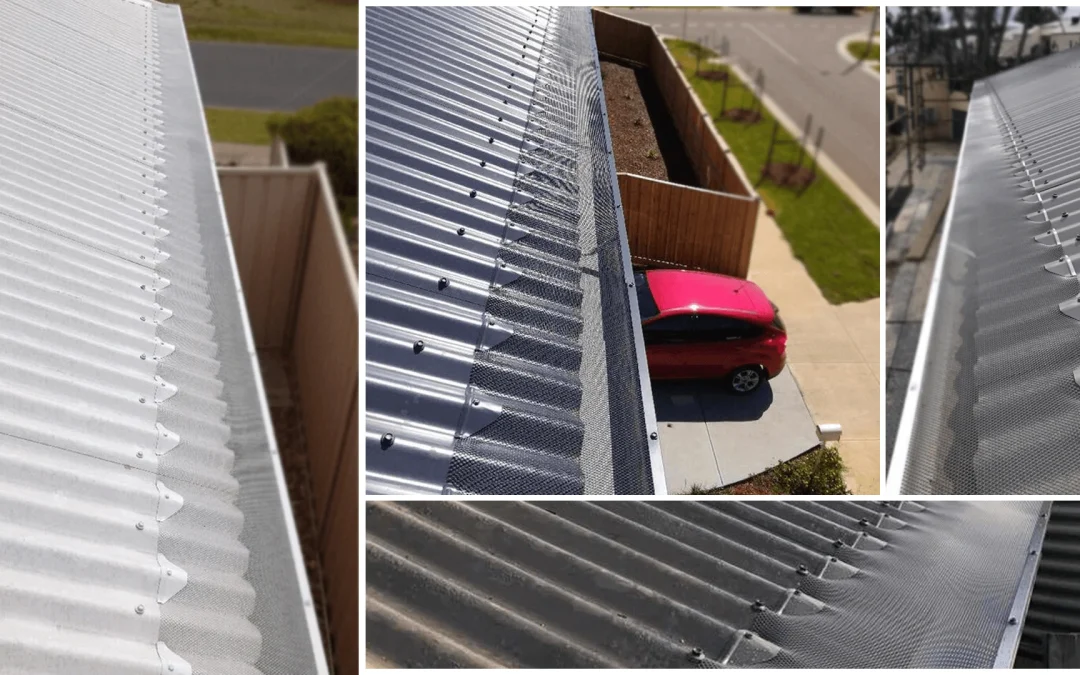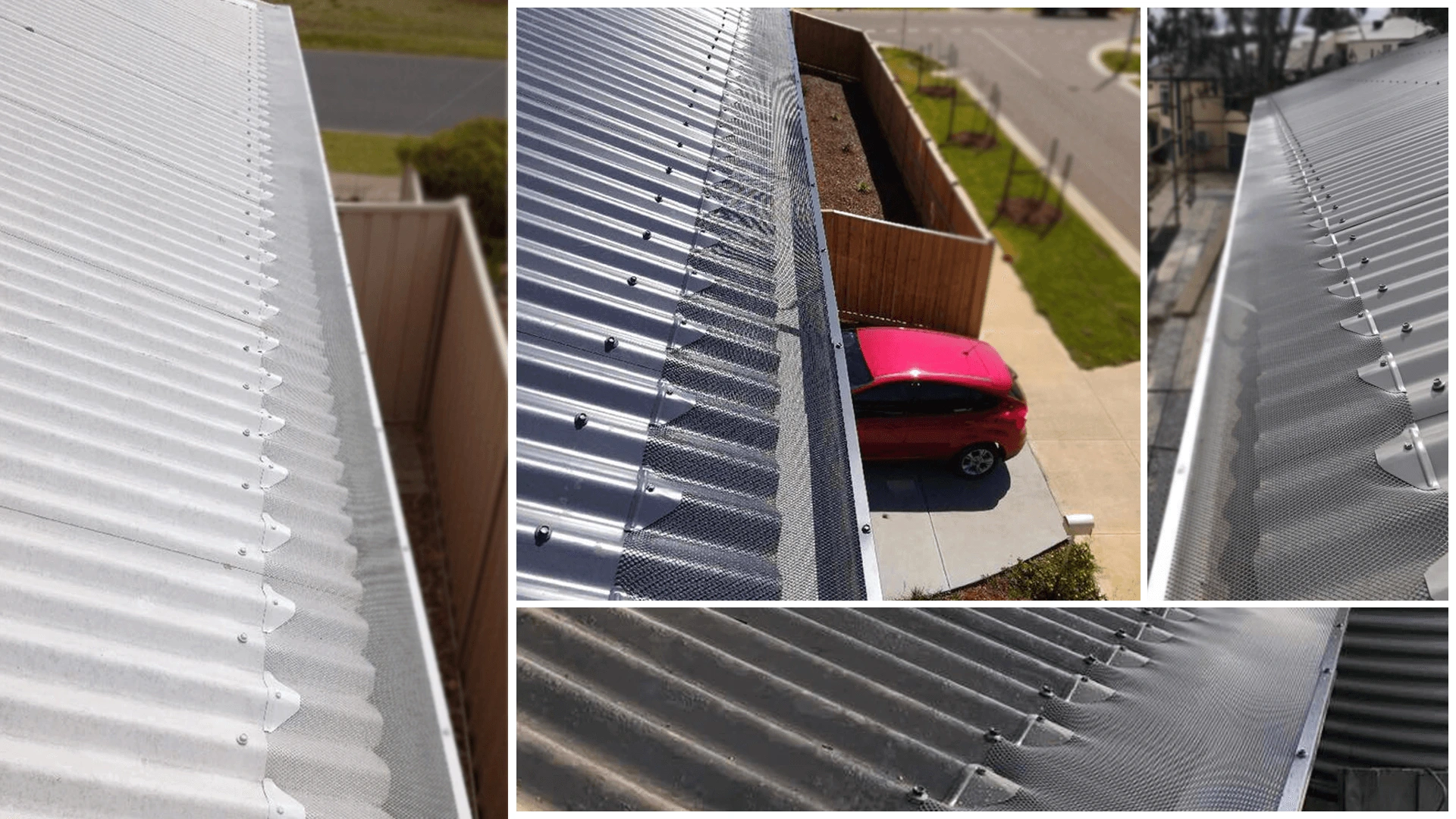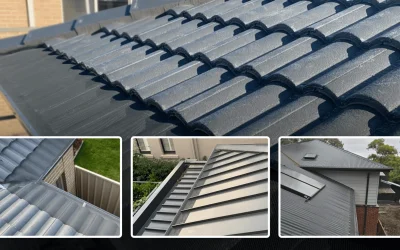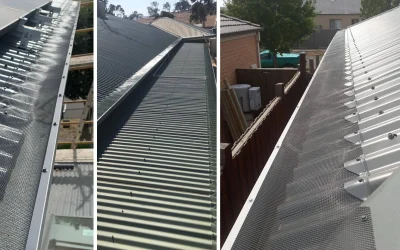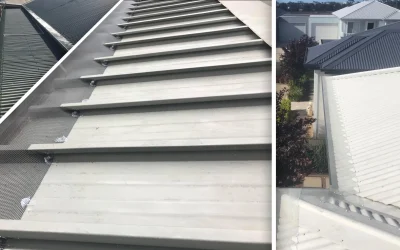When the wind starts howling and the rain turns sideways, your roof edge cops the worst of it. In cyclone country, that’s exactly where a Metal Gutter Guard life right at the boundary of uplift, suction, spray and debris. The difference between a tidy recovery and a weekend on the ladder fixing failures often comes down to one thing: the right mesh and the right gutter guard fasteners specified, spaced and installed for serious wind.
Why start with a Metal Gutter Guard?
A well-made Metal Gutter Guard does three jobs in rough weather. It keeps leaves out so downpipes don’t choke under sheet rain. It stops birds from prising their way in when eaves are rattling. And it stiffens the gutter line, so the edge behaves more like a continuous, braced strip instead of a loose, flapping lip. CPR Gutter Protection’s metal range is Australian made, fits most roofs, and is promoted as 99% effective for leaves and 100% effective for bird’s useful benchmarks when you’re buying for wind and water, not just autumn clean-ups.
That’s the promise of a good gutter guard system but cyclone performance isn’t just about mesh. It’s about the wind-load fasteners that hold that mesh and trims in place.
Know your wind: cyclonic wind regions and classes
Australia divides wind risk into regions and housing wind classes, which guide how we design and fix roof edges:
- Wind Regions A–D under AS/NZS 1170.2 (Region C = cyclonic, Region D = severe cyclonic).
- Housing wind classes C1–C4 (cyclonic) and N1–N6 (non-cyclonic) under AS 4055.
If your home sits in Regions C or D, or your site works out to C-class, you’re designing for higher uplift, more suction at roof edges, and closer, stronger fixings along flashings and trims.
Even if you’re south of cyclone latitudes, remnants of cyclones still push big winds and rain inland. That’s why it pays to select cyclone-aware gutter guard details wherever intense storms are part of your local pattern.
Mesh matters but fasteners matter more
In cyclonic areas, the humble screw becomes structural. The right roofing screws and gutter guard fasteners do four things:
- Resist pull-out under uplift. Larger gauges (e.g., 14-gauge cladding fasteners) and proper engagement into timber or metal framing help keep trims and guards down when wind tries to peel them off.
- Fight corrosion in salt-spray and wet edges. Look for AS 3566 corrosion classifications (Class 3 or 4 coatings) and bi-metal or stainless options where appropriate.
- Maintain clamping pressure across the edge. Close, consistent spacing along flashings and guard saddles reduces flutter points and localised failures. Guidance for metal flashings (max 500 mm screw spacing, unless engineering demands closer) sits in AS 1562.1. For cyclone build-ups, designers often bring that spacing in even tighter.
- Match the metals to avoid galvanic corrosion (aluminium mesh on galvanised steel, stainless screws in aluminium, etc.). Compatibility is crucial at the fastener-to-mesh-to-gutter interface.
Spec cheat-sheet for a cyclone-resilient gutter guard edge
Every home is different, and your builder/installer should confirm details against site wind class and roof type. As a starting brief for your installer:
- Mesh: robust metal gutter mesh sized to your leaf load and roof profile, with trims that cap and stiffen the edge. (CPR offers metal mesh solutions and custom fits for most roofs.)
- Fastener grade: AS 3566 compliant screws; consider Class 3/4 coatings or stainless in coastal or high-exposure sites.
- Gauge & type: in cyclonic areas, step up to 14-gauge cladding fasteners (or the engineer’s nominated equivalent) for perimeter flashing and guard trims. Use manufacturer-approved roof-to-substrate screws (e.g., self-drilling into steel purlins or type-17 into timber).
- Spacing: keep screw spacing close and consistent along flashings and guard saddles; 500 mm is a general upper limit for flashings in standard conditions (AS 1562.1), but cyclonic sites often require closer spacing based on engineering.
- Compatibility: match mesh-trim-screw materials to prevent dissimilar-metal corrosion; isolate with washers/gaskets where required.
- Wind class check: confirm your site’s C-class or N-class before finalising fixings; edges in C1–C4 take stricter detailing.
Coastal twist: salt, spray and the roof edge
Cyclone-prone regions often overlap with the coast. Salt amplifies corrosion at high-turbulence edges like gutters and ridge/valley flashings. That’s where marine-aware gutter protection comes in: choose metal gutter mesh and fasteners designed to handle salt spray and wind-driven rain and stay on top of washing and inspection. CPR’s recent write-up on gutter protection in coastal zones highlights the role of better materials and upkeep for longer life by the sea.
CPR Gutter Protection: where it fits
If you’re in Victoria and want an Australian-made metal gutter guard with a team that knows their way around roofs, CPR Gutter Protection focuses on tailored installs across roof types. Their materials are positioned as cost-effective, fit almost all existing gutters, and are backed by long experience in the trade. That makes a practical base for cyclone-aware detailing when combined with the right fasteners and spacing per Australian Standards and site wind class.
Installation cues that make a big difference
A cyclone-resilient gutter guard installation isn’t guesswork. Here’s what to look for during quoting and on the day:
- Continuous trims: rigid guard trims or saddles that tie mesh to the roof sheet or tile edge, limiting flutter points. (Ask for how trims are anchored and how corners are reinforced.)
- Substrate engagement: screws that bite into framing or the correct base metal, not just thin capping. That’s your real hold-down.
- Washered fixings: appropriate washers under screw heads to distribute load and keep water out around penetrations.
- Edge sealing: mesh neatly tucked and sealed where needed so wind-driven rain doesn’t track under flashings. National guidance emphasises well-fastened flashings with close screw spacing to resist wind-driven rain; your guard should complement, not compromise, that.
- Clean interfaces: no bare-metal contact between dissimilar materials; use specified coatings and compatible fasteners to dodge galvanic corrosion.
Maintenance: small routines, big returns
Even the best cyclone-rated gutter guard needs an annual look-over more often after a major blow.
- Rinse salt if you’re near the coast; salt plus wind equals rapid wear.
- Inspect fasteners for red rust or white corrosion bloom; swap out compromised screws with the same or higher AS 3566 class.
- Clear the odd twig wedged at ridge returns or valleys mesh keeps the bulk out, but wind can drive fine stuff into corners.
- Book periodic roof checks: WA cyclone guidance suggests regular, planned inspections so minor issues don’t become wind-borne debris the next season.
Choosing wind-load fasteners: quick buyer’s guide
When you’re comparing boxes of screws for a metal gutter guard and its trims, look for:
- Standard on the label: AS 3566 (and coating Class 3/4 for harsher zones). This isn’t marketing fluff it’s performance and longevity in Australian conditions.
- Gauge and thread for your substrate (steel vs timber). Uplift resistance depends on correct pairings and embedment.
- Head type that suits your trim and tool access (hex washer head is common for clamping trims on metal roofs).
- Washer quality (EPDM or equivalent) to keep penetrations tight under wind and rain-lash.
- Bi-metal or stainless options in severe coastal zones paired correctly with mesh and trims to avoid dissimilar-metal issues.
Site wind class: don’t guess it; check it
Before you lock in fixings and spacing, confirm your wind classification. Manufacturers like Lysaght summarise AS 4055 classes and the factors (region, terrain, shielding, topography) that drive them. Your builder, engineer or local council can help you pin it down. Accurate wind class = accurate fastener schedule and fewer surprises on site.
If you’re curious about the background math (or you’re an engineer), there are practical guides that step through AS/NZS 1170.2:2021 wind load calculations- handy references when you want to understand why the edge details matter so much.
How Metal Gutter Guard supports cyclone readiness
Here’s the honest summary of what a quality Metal Gutter Guard—paired with cyclone-aware fasteners brings to the table:
- Keeps water moving by stopping leaf choke at outlets during wind-driven rain bursts.
- Blocks birds from exploiting loosened eaves during and after a storm (a surprising post-storm behaviour in some suburbs).
- Adds a tidy, braced edge when trims are fastened to spec with close spacing, reducing local flutter and peel.
- Withstands salt and spray longer when the fasteners match the exposure (Class 3/4 coatings or stainless where needed) and materials are compatible.
Thinking of CPR’s metal gutter guard?
CPR Gutter Protection focuses on customised, Australian-made gutter guards and professional installation across roof types. If you’re in their service area and want your Metal Gutter Guard set up with the right fasteners and tidy trims, ask them to quote to your wind class and coastal exposure. Get clarity on fastener type, spacing, and material compatibility in writing, and you’ll know your mesh is backed by the fixings that make it last.
Quick checklist (save this for quoting day)
- Primary system: Metal gutter guard with rigid trims, custom-fit to your roof profile.
- Wind class: confirm C-class vs N-class for your site.
- Fasteners: AS 3566 compliant; upgrade to Class 3/4 or stainless near the coast; use 14-gauge where cyclonic guidance calls for it.
- Screw spacing follow engineering; keep flashings tight with close spacing (think ≤ 500 mm for many cases, and closer where required).
- Compatibility: avoid dissimilar-metal contact; specify matching screws, mesh and trims.
- Maintenance: rinse, inspect, replace suspect screws; schedule checks after major events.
Final word
Wind doesn’t fail a mesh it finds the weak fastener and works on it. Choose a solid Metal Gutter Guard, then obsess over the wind-load fasteners: the standard on the box, the gauge, the spacing, the washer, the metal pairing. Do that, and your edge line is ready to ride out the next blow with far less drama.
FAQs:
1. What makes a gutter guard “cyclone-ready”?
Sturdy metal mesh paired with AS 3566-compliant screws (often Class 3/4 or stainless near the coast), tight screw spacing along trims/flashings (≤ 500 mm in many cases, closer where engineered), and correct material compatibility across mesh, trims, and fasteners.
2. Do I really need different fasteners in Region C or D?
Yes. Cyclonic regions (C/D) and C1–C4 classes demand higher hold-down capacity, closer spacing, and corrosion-resistant fixings to resist uplift and wind-driven rain.
3. What standards are relevant to gutter-guard fixings?
Common touchpoints include AS/NZS 1170.2 (wind actions), AS 4055 (housing wind classes), AS 1562.1 (sheet roof/flashings—spacing guidance), and AS 3566 (self-drilling fasteners and corrosion classes).
4. What standards are relevant to gutter-guard fixings?
For metal flashings, ≤ 500 mm is a typical upper limit under standard conditions; cyclonic sites often require closer spacing as per engineering or local codes. Match your spacing to your site wind class.
5. Which screw type works best on metal roofs?
Use self-drilling cladding screws of adequate gauge (often 14-gauge for perimeter trims in cyclonic areas) with EPDM washers to maintain clamping pressure and weather-tightness.
6. What about timber substrates?
Use Type-17 self-drilling timber screws of suitable gauge and embedment. The goal is solid substrate engagement—not just into thin capping.
Social Share:
Related Posts
Why Installing a Metal Gutter Guard in Late August Can Prevent Water Damage
Ever glanced up at your gutter one humid August afternoon and wondered, “What happens if…
Why Australian Homes are Switching to Fire-Resistant Metal Gutter Guards?
In recent years, Australia has witnessed an increase in severe bushfires. Every fire season…
How Metal Gutter Guards Improve Gutter Performance and Longevity?
Gutters are a vital part of any home, protecting your property from water damage by…
